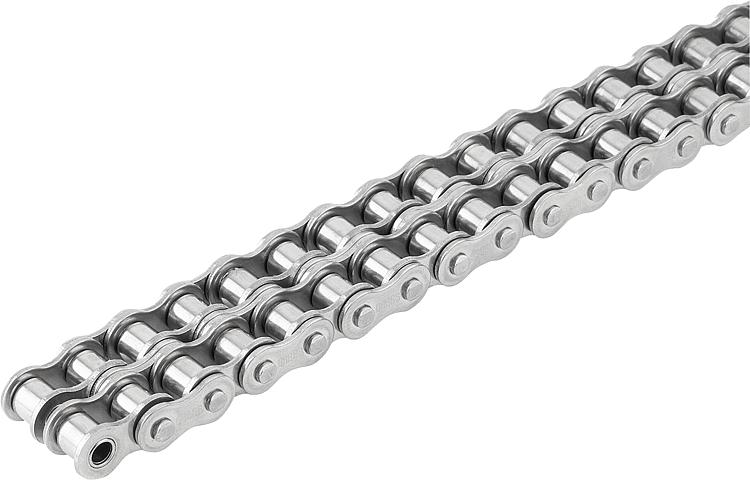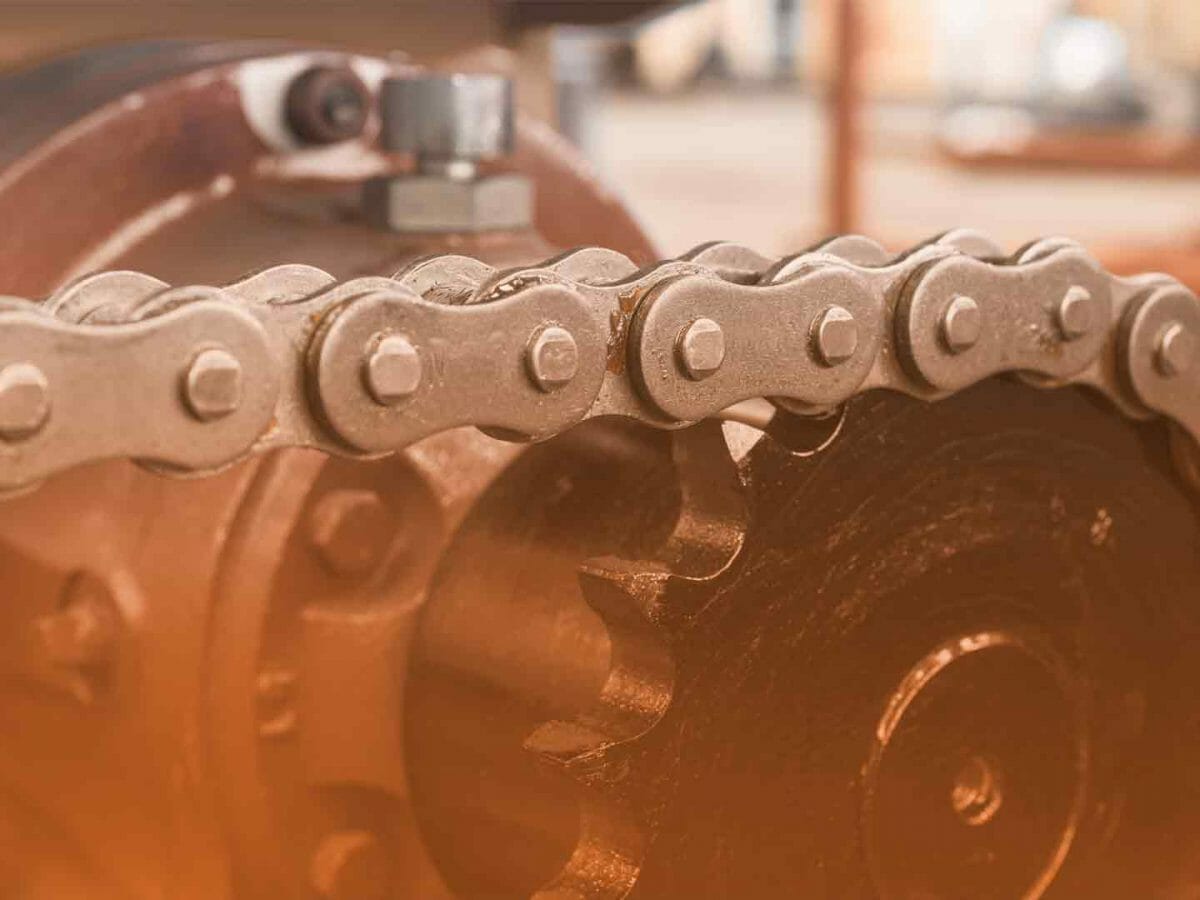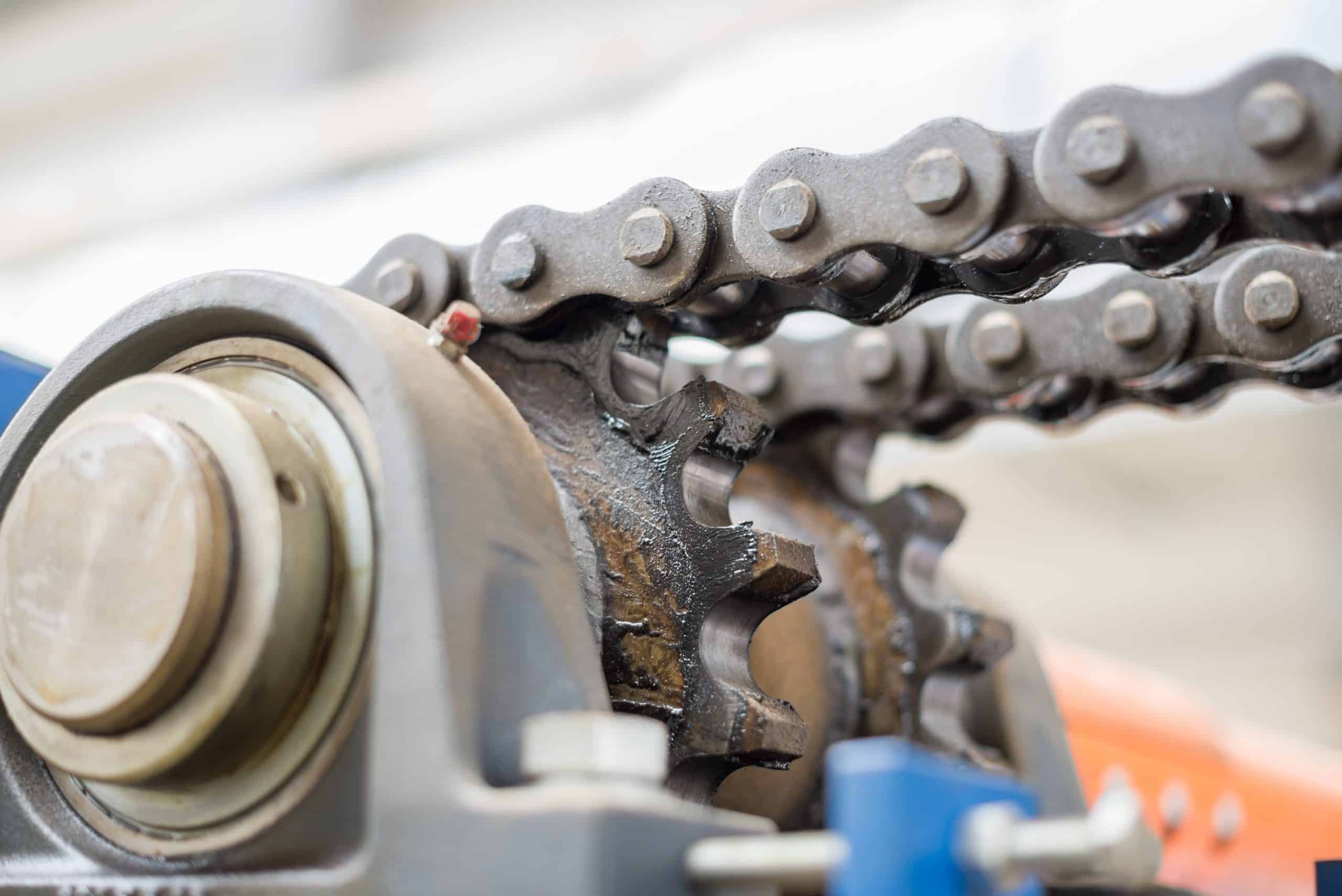What should be paid attention to in the cleaning and maintenance of mechanical chains:
For ordinary transmissions, it should not be sloppy in use during normal cleaning, otherwise it will affect its use effect. Generally, the stainless steel chain adopts a hyperbolic arc design to reduce friction, and is suitable for occasions with high power and slow running speed.
But after each use, you must not forget to clean the stainless steel chain, especially in rainy and humid environments. Please wipe the chain and its accessories with a dry cloth; if necessary, use an old toothbrush to clean the gaps between the chain pieces to remove the sand and dirt accumulated between the chains.
When cleaning stainless steel chains, warm soapy water can be used, but strong acid or alkaline cleaners should never be used as these chemicals can damage or even break the chain. In addition, do not use a solvent-added solution to clean the stainless steel chain, which will damage the chain to some extent. In addition, the use of organic solvents such as stain-removing oil should be avoided when cleaning the stainless steel chain, because this will not only damage the environment, but also clean the lubricating oil in the bearing part. When it comes to lubricants, by the way, I would like to emphasize the requirements of stainless steel chains for lubricants.
Lubrication is very important for stainless steel chains, so no matter what kind of structural chain is used, it must be lubricated reasonably. There are two ways to do this job: one is direct lubrication, and the other is lubrication after cleaning. The premise of direct lubrication is that the stainless steel chain itself is relatively clean, and it can be directly lubricated with spray irrigation lubricating oil products. After the stainless steel chain is cleaned and lubricated, it is more suitable for the situation where the chain is dirty.
Roller chains are used in relatively high temperature environments:
The roller chain enables the actuator to obtain a certain speed and direction of the transmission chain. The inner connection transmission chain is a transmission chain that connects the two unit movements inside the compound movement, or connects the actuators that realize the movement of the two units inside the compound movement. The essential difference between the two is that the movement is composed of a single or multiple movements and an external linkage transmission chain, which is the entire compound movement and the external movement source.
Only determining the speed and direction of the forming motion has no direct influence on the shape of the machined surface, and because the internal linkage transmission chain is linked to the compound motion, the two unit movements that must ensure strict kinematic linkage inside determine the track of the compound motion. Whether its transmission ratio is accurate and whether the relative motion of the two units determined by it is correct will directly affect the shape accuracy of the machined surface and even fail to form the required surface shape.
The suspension chain has double horizontal wheels, which can effectively reduce the load capacity of the horizontal wheel bearings. Its main parts are based on 40 manganese steel and have undergone heat treatment, which can effectively increase the tensile strength of the chain and prolong the service life of the chain. The structure of this chain is reasonable, the cross steering shaft is forged and formed in one piece, and the special rivet joint design. In order to enhance the load capacity of the chain, the horizontal and vertical wheels are designed with higher specifications, and at the same time have the characteristics of flexible steering, strong tensile resistance, and heavy load. Especially suitable for use in environments with relatively high temperatures.
The daily maintenance of the chain is divided into primary maintenance and secondary maintenance. During the normal use of the production line, due to normal or accidental wear and tear, as well as various abnormal phenomena during the operation of the production line, it must be stopped immediately and reported for repair in time to avoid major accidents. Non-professional maintenance personnel or without the permission of professional maintenance personnel are not allowed to repair by themselves.
When repairing the circuit, if necessary, the person in charge of the chain production line can be asked to assign personnel to wait at the electrical box to prevent others from opening the production line, and at the same time, hang up warning signs. At the same time, the power must be turned off to perform maintenance, and live operation is not allowed.
Analysis of the Causes of Corrosion of Roller Chains:
An often overlooked but very important component on roller chain cranes is the lifting chain. When the equipment is used for a long time, each component will tend to age or gradually fail, and the same will happen to the lifting chain. The more common is the corrosion of the chain. In addition to the relationship between time, what other reasons would lead to similar problems?
1. The lifting chain is rusted due to the lack of anti-rust treatment
In the production process of the lifting chain, the operator did not strictly follow the production requirements for anti-rust treatment, and at the same time did not use anti-rust packaging. Once it comes into contact with corrosive liquid and gas, etc., it will rust. .
2. The corrosion of the lifting chain is caused by the substandard quality of the anti-rust oil
Even if products such as anti-rust lubricating oil and clean kerosene have been used on the lifting chain, if the quality of the product does not meet the technical requirements, it will be in vain, and it will also cause corrosion of the lifting chain.
3. The corrosion of the lifting chain is related to the chain material
In order to reduce the production cost of lifting chains, some manufacturers choose unqualified materials, such as the high content of non-metallic impurities in steel, which will reduce the corrosion resistance of the formed chain itself, resulting in similar defects.
4. The corrosion of the lifting chain is related to the operating environment. When the lifting chain works in a poor environment for a long time, it will be considered that the content of harmful substances is too high, or the space is too small to carry out anti-rust treatment, which will cause damage to the chain. Negative Effects.
Post time: Mar-28-2023






